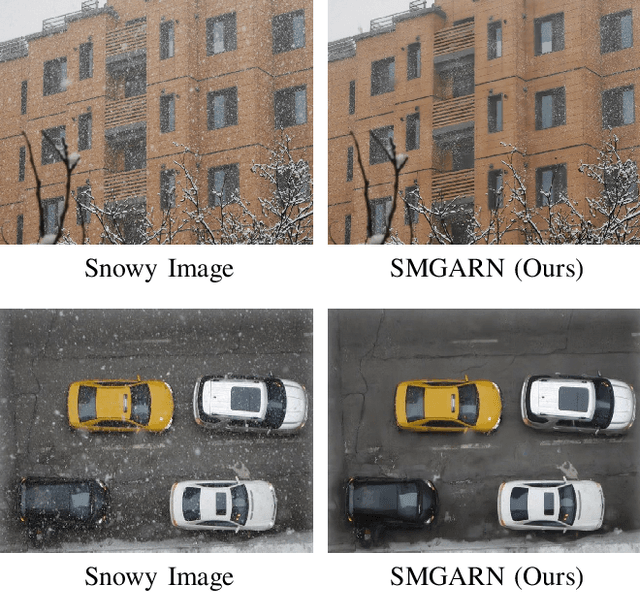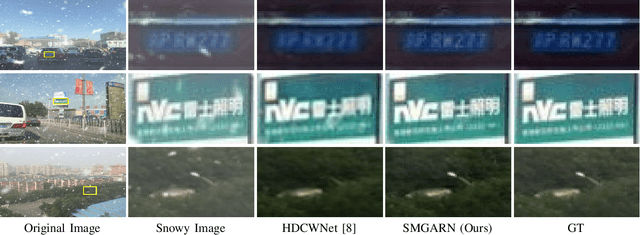Bodong Cheng
EWT: Efficient Wavelet-Transformer for Single Image Denoising
Apr 13, 2023Abstract:Transformer-based image denoising methods have achieved encouraging results in the past year. However, it must uses linear operations to model long-range dependencies, which greatly increases model inference time and consumes GPU storage space. Compared with convolutional neural network-based methods, current Transformer-based image denoising methods cannot achieve a balance between performance improvement and resource consumption. In this paper, we propose an Efficient Wavelet Transformer (EWT) for image denoising. Specifically, we use Discrete Wavelet Transform (DWT) and Inverse Wavelet Transform (IWT) for downsampling and upsampling, respectively. This method can fully preserve the image features while reducing the image resolution, thereby greatly reducing the device resource consumption of the Transformer model. Furthermore, we propose a novel Dual-stream Feature Extraction Block (DFEB) to extract image features at different levels, which can further reduce model inference time and GPU memory usage. Experiments show that our method speeds up the original Transformer by more than 80%, reduces GPU memory usage by more than 60%, and achieves excellent denoising results. All code will be public.
Snow Mask Guided Adaptive Residual Network for Image Snow Removal
Jul 11, 2022



Abstract:Image restoration under severe weather is a challenging task. Most of the past works focused on removing rain and haze phenomena in images. However, snow is also an extremely common atmospheric phenomenon that will seriously affect the performance of high-level computer vision tasks, such as object detection and semantic segmentation. Recently, some methods have been proposed for snow removing, and most methods deal with snow images directly as the optimization object. However, the distribution of snow location and shape is complex. Therefore, failure to detect snowflakes / snow streak effectively will affect snow removing and limit the model performance. To solve these issues, we propose a Snow Mask Guided Adaptive Residual Network (SMGARN). Specifically, SMGARN consists of three parts, Mask-Net, Guidance-Fusion Network (GF-Net), and Reconstruct-Net. Firstly, we build a Mask-Net with Self-pixel Attention (SA) and Cross-pixel Attention (CA) to capture the features of snowflakes and accurately localized the location of the snow, thus predicting an accurate snow mask. Secondly, the predicted snow mask is sent into the specially designed GF-Net to adaptively guide the model to remove snow. Finally, an efficient Reconstruct-Net is used to remove the veiling effect and correct the image to reconstruct the final snow-free image. Extensive experiments show that our SMGARN numerically outperforms all existing snow removal methods, and the reconstructed images are clearer in visual contrast. All codes will be available.
 Add to Chrome
Add to Chrome Add to Firefox
Add to Firefox Add to Edge
Add to Edge